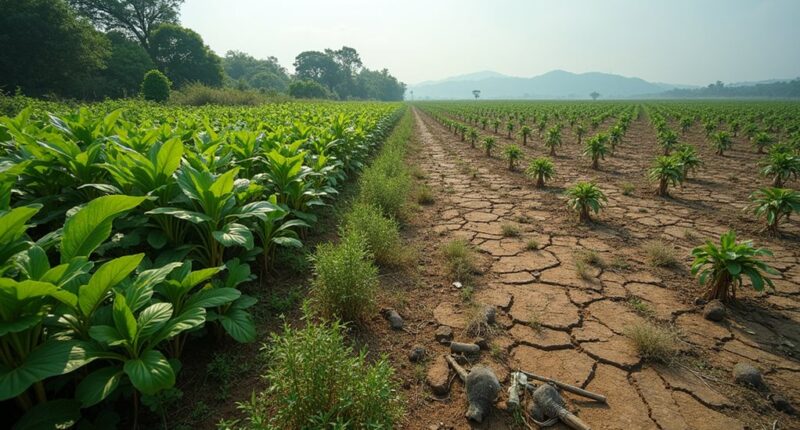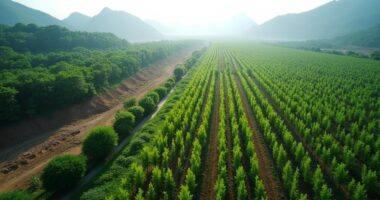The Billion Tree Tsunami project, initially positioned as an ecological savior, has shown its darker side, pushing communities off their ancestral lands. With fast-growing monocultures turning vibrant ecosystems into bland green deserts, local wildlife suffers, and cultural disruptions arise. Displaced pastoralists face dwindling livelihoods, while jobs linked to tree planting often amount to little more than temporary fixes. As the initiative rushes to plant trees, it overlooks community needs and ecological health. Curious about the complexities behind this green endeavor?
The Hidden Costs of Tree Planting Initiatives
In a world where tree planting has become the poster child for environmental initiatives, the so-called “Billion Tree Tsunami” is beginning to resemble more of a misadventure than a triumph. What started as a noble effort to green the earth has morphed into a tangled web of ecological misfires, land grabs, and social upheaval. Imagine a grand buffet where the chefs decided to serve only one dish—delicious but lacking variety, and ultimately unappetizing.
At the heart of the matter lies a troubling trend: large-scale tree plantations often feature fast-growing monocultures, a fancy term for planting just one type of tree. While these may look good on paper, they reduce soil fertility and biodiversity, turning vibrant ecosystems into monotonous green deserts. Local wildlife? They might as well pack their bags and leave, as these non-native trees often disrupt their habitats. It’s like inviting a loud guest to a quiet dinner party—chaos ensues. Moreover, with only five per cent forest cover in Pakistan compared to the global average, the ecological consequences are amplified. This initiative, with a program budget reported at US$700 million, highlights the stark contrast between funding and genuine ecological stewardship.
Then, there’s the sticky issue of land grabs. Reports have surfaced of communal lands being converted into tree plantations without so much as a “by your leave” to local communities. Pastoralists and indigenous groups are finding themselves squeezed out, like last season’s fashion. As tensions rise, disputes over access to customary lands brew, often leaving traditional practices in tatters. Effective forest conservation requires community participation in decision-making processes to ensure local needs and traditional knowledge are respected.
Economically, the Billion Tree Tsunami has provided temporary jobs, but many are short-lived and low-paying. When croplands are swapped for tree farms, livelihoods for livestock herders and subsistence farmers dwindle. Imagine trading in your trusty old bicycle for a shiny new unicycle—great in theory, but not so practical on uneven terrain.
In the end, this ambitious tree-planting initiative raises more questions than answers. With monitoring and verification of outcomes inconsistent, one has to wonder: has the rush to plant trees overlooked the very roots of community and ecological health? Perhaps it’s time to rethink, replant, and truly listen to those who know the land best.








